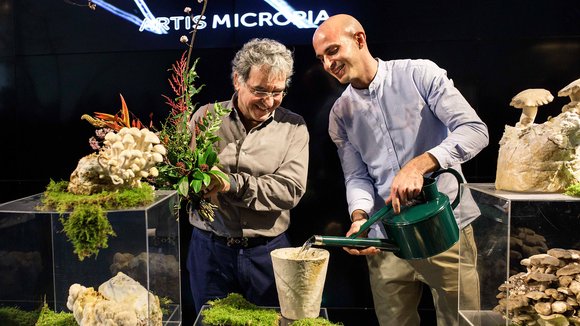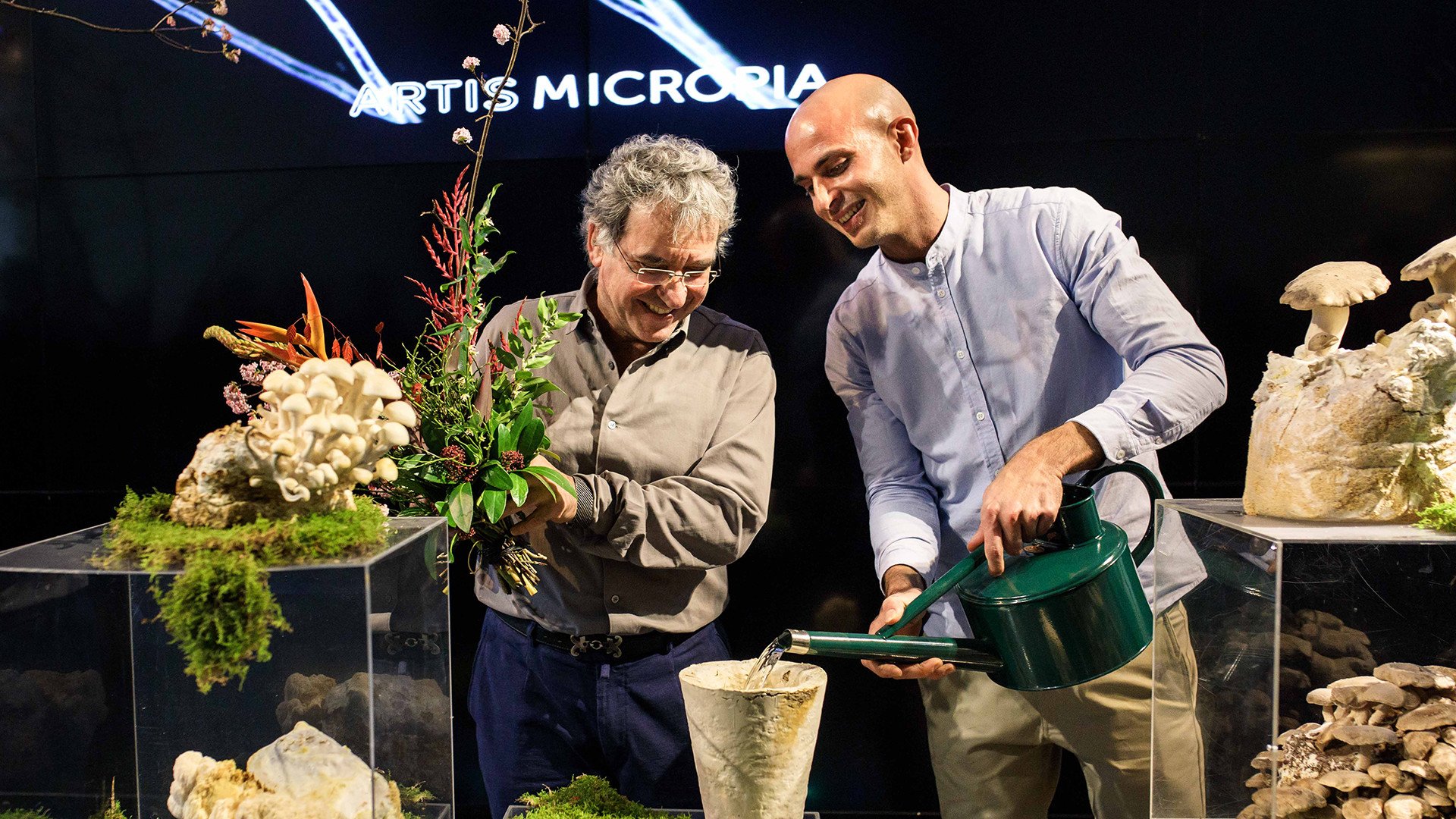Together with Utrecht University scientists, designer Maurizio Montalti developed a new way of using fungi as a sustainable material. Micropia, the world's only microbe museum, is showing this application to the public for the first time ever in a new permanent display. There are lamps, vases, chairs and even slippers made from fungi on show. Visitors can see, smell and even touch The Fungal Future.
Mycelium
While studying at the Design Academy, Maurizio Montalti was already searching for a way to make material that did not create waste when the product was discarded. Fungi are indispensable in recycling. In nature they break down organic material by growing across their feeding materials. This growing power was an opportunity. Montalti let the mycelium (the network of long branching filaments called hyphae) spread itself via organic nutrients. This results in a firm yet light material. Together with Han Wösten, professor of Microbiology at Utrecht University (UU), Montalti was able to develop a method to grow fungi in a controlled manner on all kinds of materials. Moulds can be used to create various shapes.

ARTIS-director Haig Balian (left) and artist Maurizio Montalti.
From oyster mushroom to lampshade
One of the types of fungi used is well known: the oyster mushroom (Pleutorus ostreatus). Oysters mushrooms thrive on dead plant material. If you 'feed' an oyster mushroom agricultural material, such as wood chips or straw, the hyphae grow throughout it and connect the fibres together. Effectively, the fungus acts as an all-natural glue. In Micropia, a number of utensils are on display made from fungi. These range from a lightweight chair and waterproof vase to a translucent lampshade. This is an excellent example of Natura Artis Magistra: nature is the teacher of art and science.
Future
As a platform, Micropia brings together stakeholders in the realm of microbiology . As a museum, Micropia will continue to display new applications. In Micropia, you can see, smell and touch the mycelium. All products are entirely natural and completely biodegradable. Because they are mainly made from agricultural waste, they are perfectly suited for the circular economy. As replacement for wood, rubber, paper and even plastic, fungal materials are a sustainable alternative to polluting materials.

